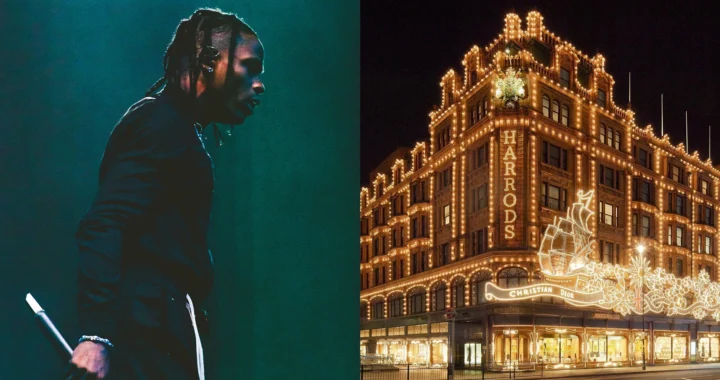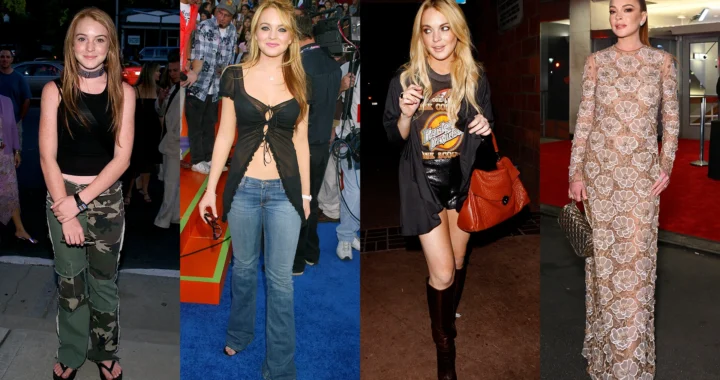Endorsed by Raf Simons, Marc Jacobs, McQueen and more, art showcases like Frieze London are so hot right now.
Anyone stepping into Frieze’s white-walled labyrinth this week can expect a splashy display of the AW22 collections. Among the blue-chip masterpieces from your Damien Hirsts and Robert Rauschenbergs, throngs of panicked art world aficionados, curators and gallerists rush between booths, dripped out in the new season’s finest fashions. It’s technically an art event, but from where we’re sitting, the abundance of Birkins, new new Bottega and Raf Simons bomber jackets would suggest otherwise. Frieze is the unofficial fashion week.
In their purest form, art fairs are trade shows, but — like fashion weeks — they garner press, social media coverage and celebrity endorsements. In marketing speak, they’re ‘activation’ opportunities to grow reach, retention, authority and every other buzzword spat across boardrooms. KPIs, ROI… you get the idea. Little wonder, then, that fashion brands and retailers want a piece of the art fair pie.
Of course, the marriage of fashion and art is hardly new. Speak to any gallerina manning the booth at Frieze and there’s every chance they will namedrop Raf Simons, Jonathan Anderson and Rick Owens as visitors. And let’s forget that two names behind fashion’s largest luxury conglomerates have major stakes in the art world. Kering founder François Pinault turned the Bourse de commerce into the Pinault Collection, while LVMH CEO Bernaud Arnault opened the Fondation Louis Vuitton — both major museums with serious footfall. But art fairs as an official fashion moment? Now, that’s new. For further proof, just look at Frieze Seoul’s inaugural event that ran this September. Featuring Saint Laurent’s display of artist Lee Bae, a film programme delivered by Chanel, and a slew of brand dinners and parties attended by K-pop stars including BTS, it set the stage for a seriously fashun Frieze London.
Partnering again with MATCHESFASHION for a series of events including Raf Simons’ Kvadrat installation, breakfasts with Michèle Lamy and brunch with Christopher Kane, Frieze London has embraced the trend with open arms. “There has always been a strong connection between the worlds of art and fashion with the luxury market driven by discovery,” explains MATCHESFASHION’s chief brand and content officer, Jess Christie. “Through content creation, physical and digital activations and personalised offers to their VIP members, our partnership provides a threefold approach: raising brand awareness, engaging and connecting with new customers and showcasing MATCHESFASHION as a cultural pioneer.” To Jess’ point, brands no longer appeal to one-dimensional markets but to personas instead. Customers aren’t mere data; they are fully-fledged categories with a portfolio of interests. Put crudely, if you’re into Loewe’s Puzzle bag, there’s a chance you’ll like the Loewe Craft Prize winner Jennifer Lee’s sculptures.
It works both ways. “As you would expect we have a hugely sophisticated audience for our fairs, and our visitors’ love of arts extends to creativity more broadly — film, music and, of course, fashion,” says Emily Glazebrook, Frieze’s commercial director. Art fairs are a business, so leaning into their audience’s rich tapestry of tastes is only wise. “As the breadth and depth of creative talent in London grows ever stronger, these worlds draw together even more closely and, in turn, see an increased appreciation of contemporary art more broadly — it’s a virtuous circle,” she continued, mirroring a wider reckoning at play in the art world. Despite its impenetrable softboi press releases that cite Deleuze and Sartre, the art world is also a market. Comparisons that place fine art on a pedestal as untainted, pure and divine, and fashion as its defiled charlatan, just don’t hold anymore. This is not to call the art world a populist utopia à la Jeffrey Deitch, but any noble, 19th-century vision of art can be put to bed.
Conversely, the nature of a fashion show might position the art fair as its democratic alternative. Offering insight into why fashion brands align with art fairs, CEO of art PR firm Sutton, Calum Sutton, makes an important point. “One important reason is the key difference between a fashion week and an art fair week — the former is invite-only: press, buyers and other specialists — whereas an art fair is a ticketed public event that receives tens of thousands of visitors.” That said, this occludes one pivotal factor: tickets to art fairs are expensive.
Maybe, this fashion-art-fair merger is rooted in the internet, whose democratising effects transcend physical barriers to participation. Consider, for example, our media consumption. Until the internet really took off, engagement with fine art from an audience as large as fashion’s would be rare. People in the 90s weren’t picking up art magazines like they were fashion magazines. Both in terms of stockists and their contents, they weren’t as accessible. Now, things have flattened out. Whether you went to Frieze last year or not, you very well caught wind of Versace’s party, if not just from the A-list attendees’ Instagram stories. It’s modern marketing 101. Need an excuse to make some noise on social media? Have Donatella Versace throw a shindig, invite Kylie and Dua Lipa, and watch your impressions multiply. As an industry reliant on events-based marketing, the fashion world knows how to generate buzz from one single moment.
Indeed, this year’s schedule promises serious moments with the hotly anticipated Raf Simons and Roksanda runway shows taking the fair by storm, special events with Moncler and Loewe, plus Alexander McQueen and Selasi showing in close proximity. However, it’s not all-out glamour. The fair is also a time for brands to build networks. As Roksanda Ilincic explains, “Frieze Week has been a longstanding highlight and a community through which I have had the pleasure of meeting so many incredible artists, architects and creators that turned into dear friendships and collaborations throughout the years.” In this way, art fairs allow for connections and discussions to form around a designer’s work that sometimes the singular fashion show cannot facilitate. Take the ‘Conversations’ series at Paris+ par Art Basel. This year, attendees will hear Grace Wales Bonner speak on the topic of Pan-Africanism in contemporary subculture, sharing with viewers the research and thinking that informs her practice, an ideal activation for a label rooted in slower, pensive design.
That’s what makes this shift exciting for designers. Now, they can cast their net further without conforming to an age-old institution that demands quick, peppy appeal and heavy investment. Sure, we love a good, old-fashioned fashion moment, but this doesn’t need the runway to happen. Shows, as the death of the Queen revealed, demand a lot of financial investment and organisation. If showcasing and promoting your brand at an art fair can incite new approaches, cut costs, grow networks and invite new audiences to your brand — why wouldn’t you choose show at an art fair?






